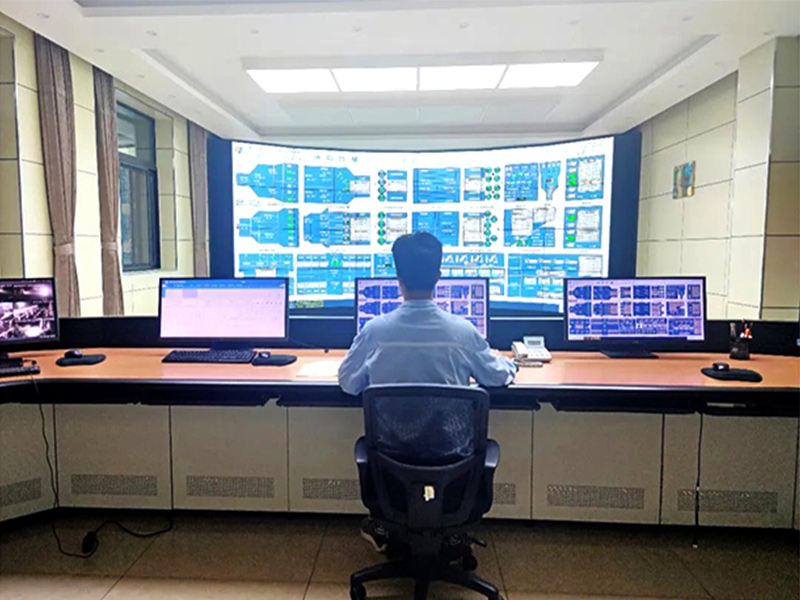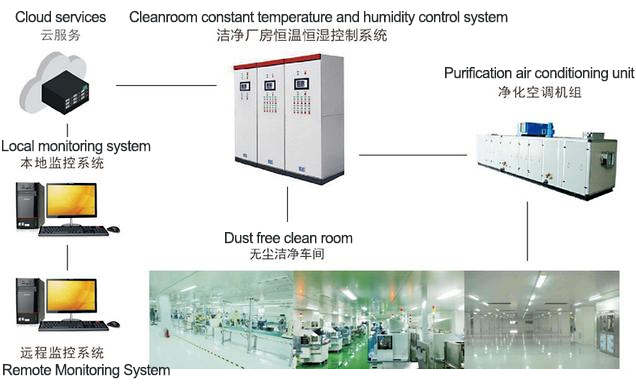1、 What is an automatic control system for sewage treatment?
In the production process of sewage treatment plants, a large number of valves, pumps, fans, slag removal equipment, sand removal equipment, slag scraping and suction equipment, sludge heating, sludge mixing, biogas processing and utilization need to be adjusted on and off according to certain procedures, time and logical relationships. There are still a large number of facilities and equipment that need to be organically combined and operated in the predetermined time sequence. This requires an automatic control system to control the process operation of the entire factory in order to form a modern production line with orderly automatic control.
The self-control system of sewage treatment process has the characteristics of multiple links, large system, and complex wiring. In addition to the common features of general control systems (such as analog and digital quantities, sequential and real-time control, open-loop and closed-loop control), it also has unique characteristics that are different from general control systems (such as COD, BOD, SS, ammonia nitrogen, total phosphorus, and pH values as the final control objects). In order to meet these parameters, it is necessary to comprehensively adjust and control the operating status of numerous equipment, the inflow and outflow of each tank, the inflow and outflow of sludge, the dosage of chemicals, and the processing time of each section.
The self-control system of a sewage treatment plant mainly refers to the real-time monitoring and automatic adjustment of various process parameters in the sewage treatment process through equipment such as computers, automation instruments, and controllers. This system can improve the efficiency of sewage treatment, reduce operating costs, minimize manual operation errors, and also ensure the stability and safety of sewage treatment.

2、 What are the contents of the automatic control system for sewage treatment?
(1)Process Control System
The automatic control system of the treatment process is one of the essential components in the sewage treatment process. It mainly includes the following subsystems:
Automatic control of aeration system: Aeration is an important part of biochemical reactions. By monitoring and controlling parameters such as aeration time, air volume, and energy consumption through computers, appropriate aeration time and energy consumption are ensured during the treatment process to promote the growth and reproduction of aerobic bacteria.
Sludge concentration self-control: By monitoring the mud concentration and liquid level online, the flow rate of the mud pump is automatically adjusted to ensure that the concentration and circulation ratio of the mixed solution can reach the optimal state.
Scheme control and self-control: Based on changes in the amount of incoming water pollution and various process parameters, the treatment scheme is automatically adjusted and switched. Using network remote operation and other methods, the biochemical treatment is automatically completed according to the prescribed process, reducing errors caused by manual operation and negligence.
(2)Equipment operation self-control system
In sewage treatment plants, it is also necessary to monitor and control the operation status of equipment in real time through an automatic control system to maximize equipment efficiency and safety. Including the following aspects:
Liquid level and flow self-control: online detection of parameters such as liquid level, water flow velocity, and liquid level fluctuations, and automatic adjustment of valves based on different liquid levels and water flows to maintain balance of inlet and outlet flow.
Temperature and humidity self-control: Real time monitoring of the temperature and humidity in the computer room, achieving control of the air conditioning system, ensuring the maintenance of a suitable temperature and humidity environment, and protecting the normal use of equipment.

(3)Safety self-control system
In order to improve the safety and reliability of sewage treatment plants, some safety self-control systems need to be installed. It mainly includes the following contents:
Sewage flow monitoring and alarm self-control: When the inflow pollution flow exceeds the set limit, an alarm will be immediately triggered and emergency measures will be taken to prevent the coverage of pollutants during operation and treatment, ensuring equipment safety.
Electrical self-control: Before using basic equipment such as high and low voltage distribution, lighting, ventilation, etc. in the sewage treatment plant, its electrical self-control function needs to be tested to perfectly solve potential safety hazards during operation.
In summary, the self-control system of sewage treatment plants needs to comprehensively consider the three aspects of treatment process self-control system, equipment operation self-control system, and safety self-control system in order to better optimize and automate the sewage treatment process.
Post time: Aug-16-2024

